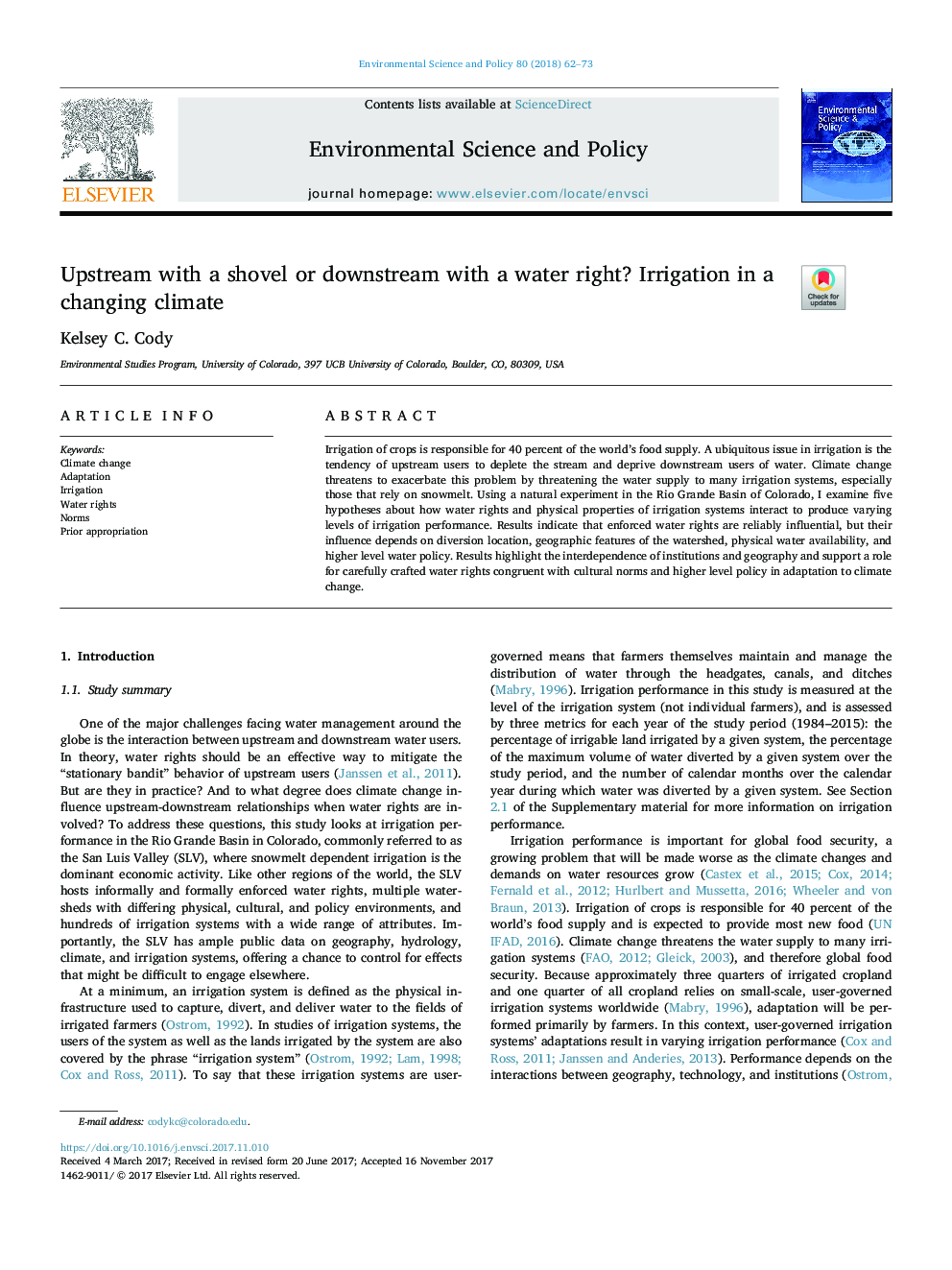| Article ID | Journal | Published Year | Pages | File Type |
|---|---|---|---|---|
| 7466287 | Environmental Science & Policy | 2018 | 12 Pages |
Abstract
Irrigation of crops is responsible for 40 percent of the world's food supply. A ubiquitous issue in irrigation is the tendency of upstream users to deplete the stream and deprive downstream users of water. Climate change threatens to exacerbate this problem by threatening the water supply to many irrigation systems, especially those that rely on snowmelt. Using a natural experiment in the Rio Grande Basin of Colorado, I examine five hypotheses about how water rights and physical properties of irrigation systems interact to produce varying levels of irrigation performance. Results indicate that enforced water rights are reliably influential, but their influence depends on diversion location, geographic features of the watershed, physical water availability, and higher level water policy. Results highlight the interdependence of institutions and geography and support a role for carefully crafted water rights congruent with cultural norms and higher level policy in adaptation to climate change.
Related Topics
Physical Sciences and Engineering
Energy
Renewable Energy, Sustainability and the Environment
Authors
Kelsey C. Cody,
